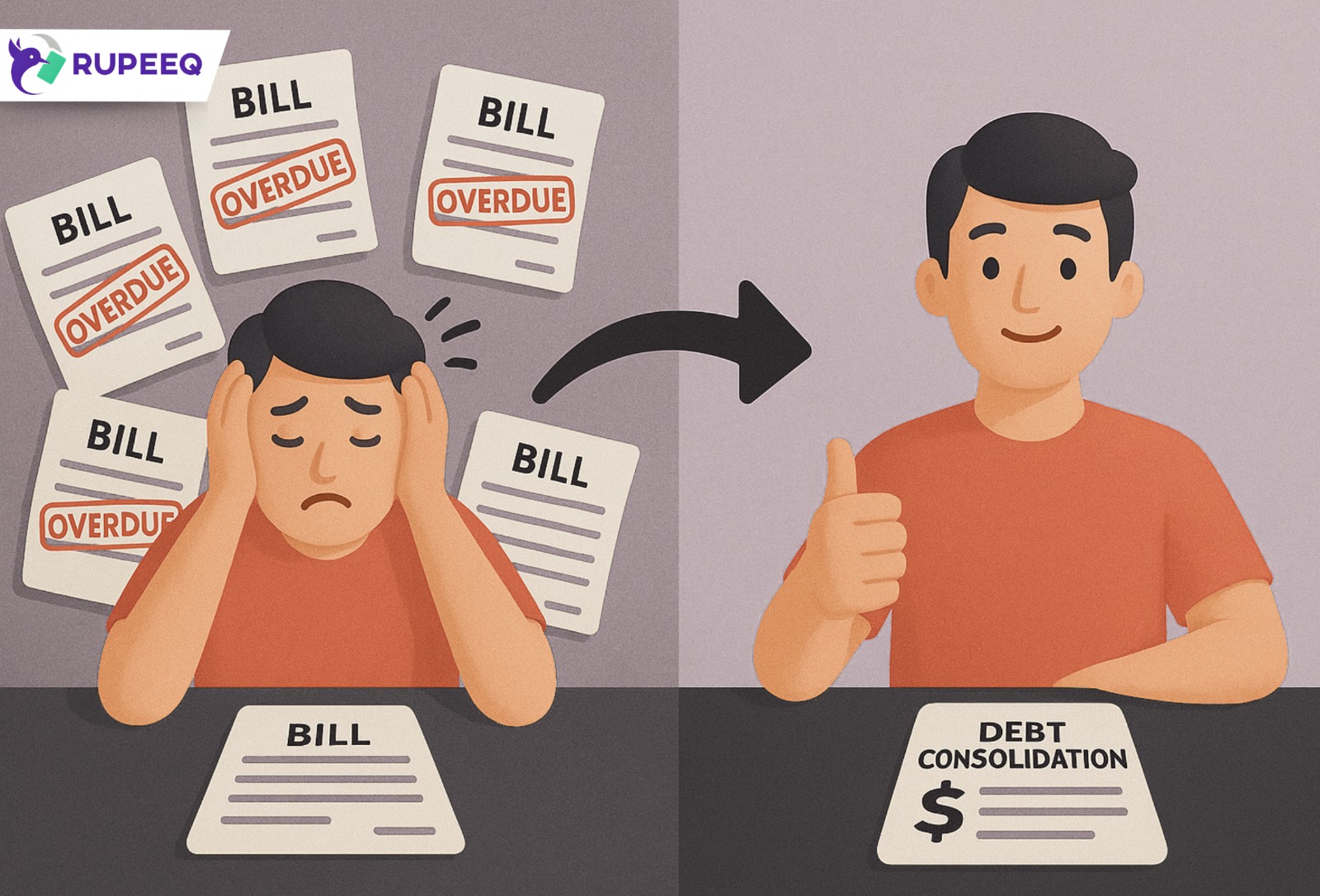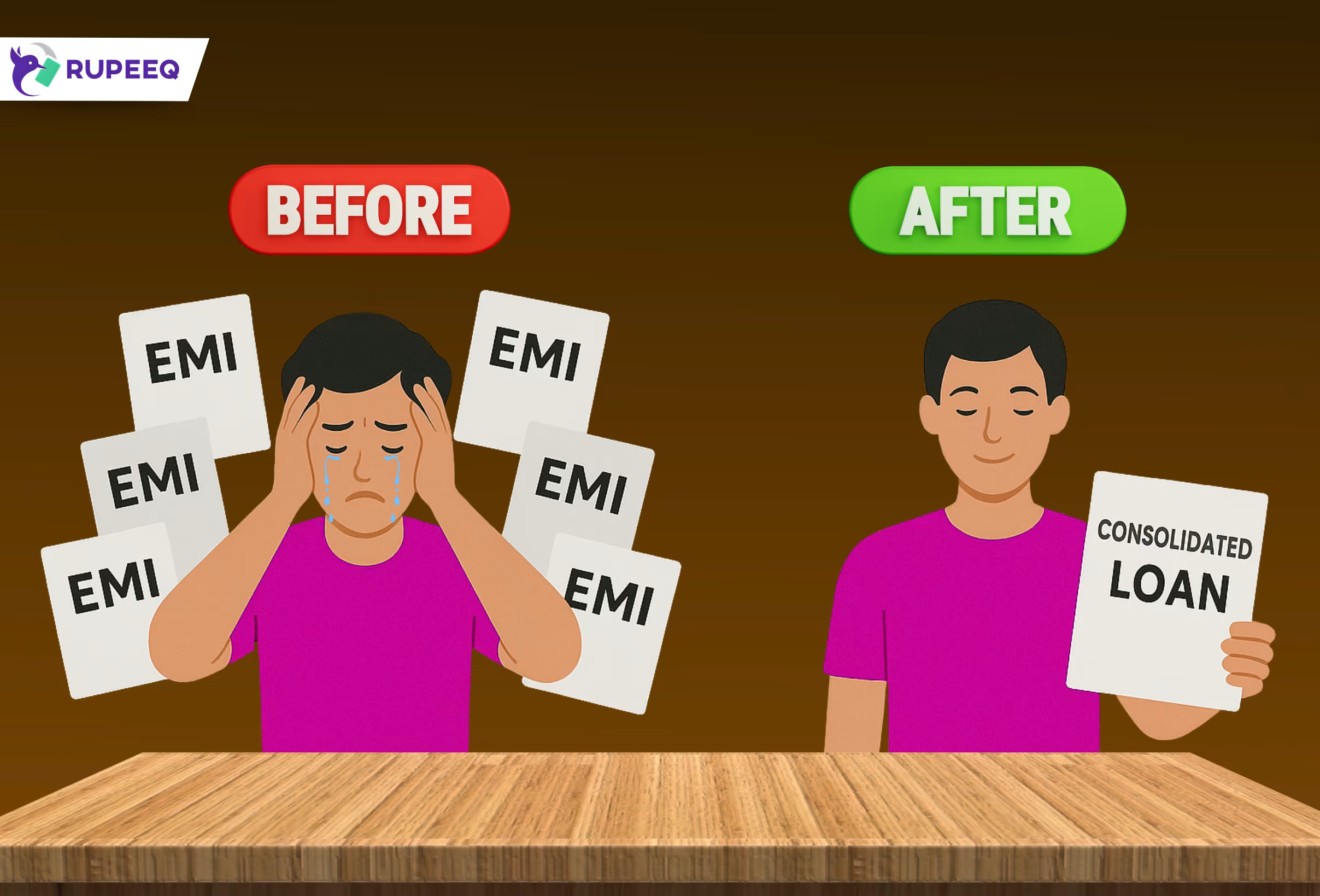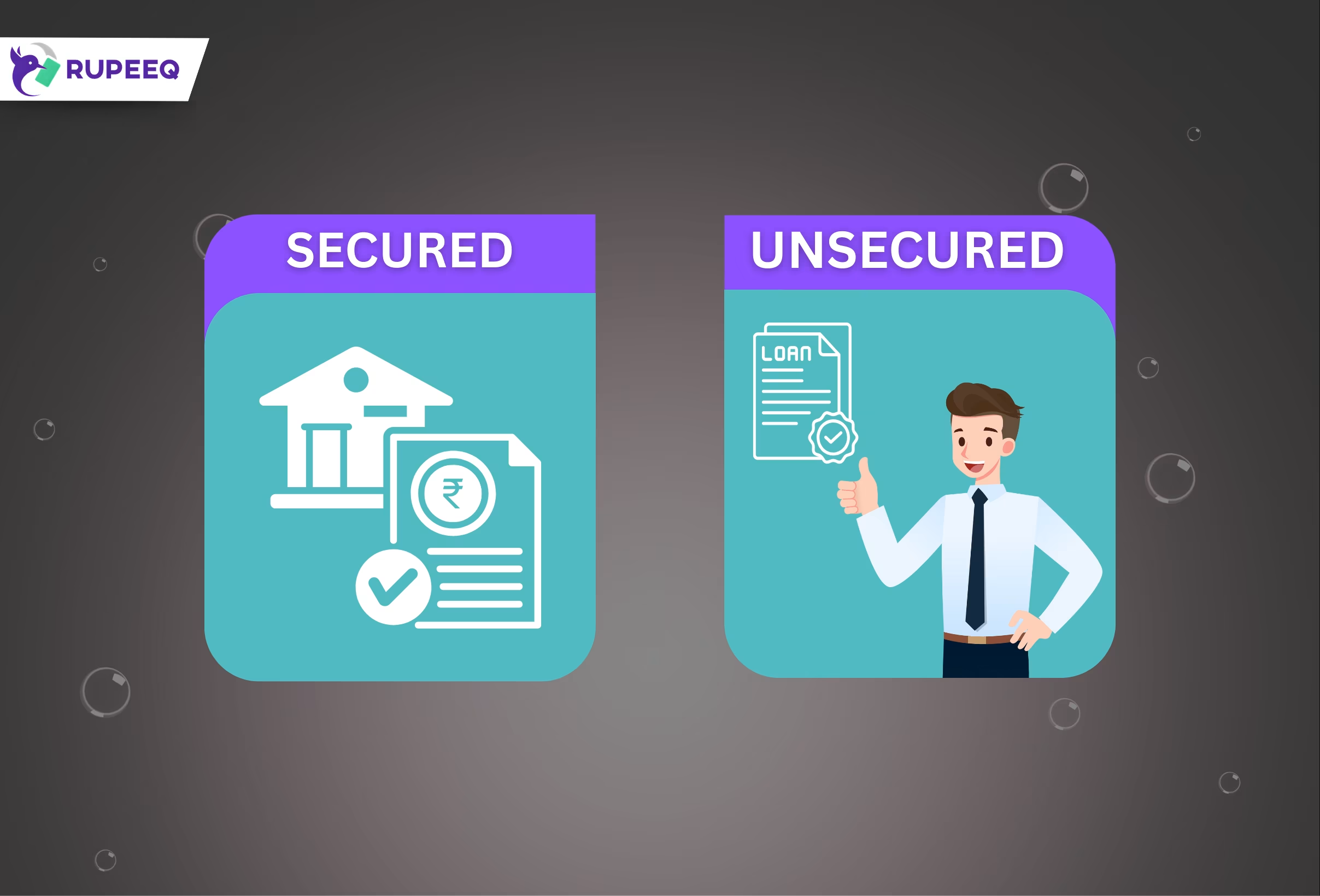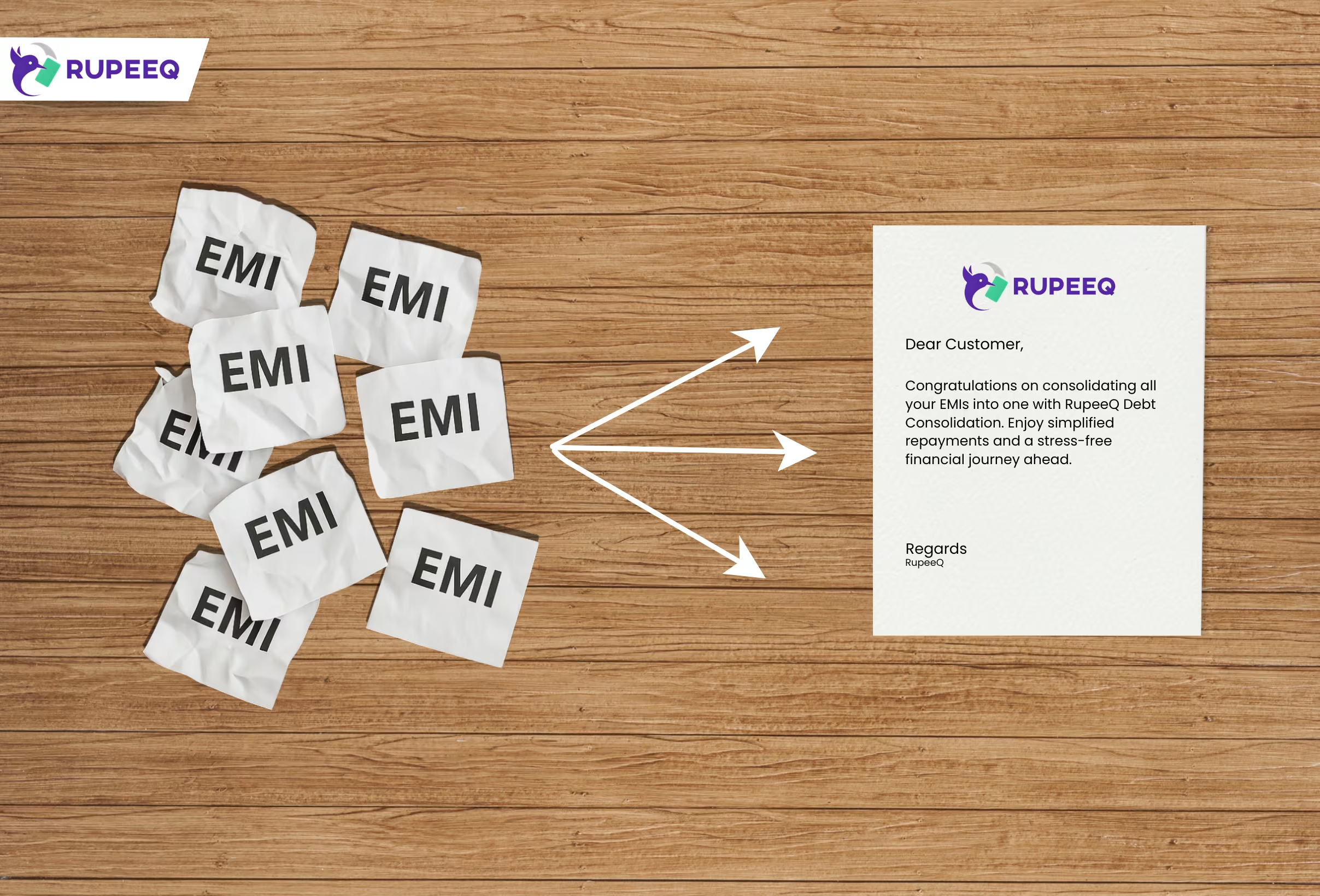Managing your finances can feel like a juggling act—especially when you’re dealing with multiple loan EMIs, unexpected expenses, or high-interest debts. If you’re struggling to keep up, debt consolidation could be the reset you need. This financial tool allows you to combine multiple outstanding loans into one, helping you take back control of your monthly obligations. In this blog, we’ll explore five of the most common financial problems that debt consolidation can solve, and how platforms like RupeeQ can help make the process simpler.
What is Debt Consolidation?
Debt consolidation is the process of merging several existing loans—such as personal loans, education loans, or other unsecured debts—into a single loan. Instead of paying different EMIs to multiple lenders, you repay just one EMI every month. This can reduce your overall interest burden, improve your cash flow, and simplify repayment.
Now, let’s look at the real-life financial problems that debt consolidation loan can solve.
1. Struggling With Multiple Loan EMIs Every Month
One of the biggest challenges borrowers face is managing multiple EMIs with different due dates, amounts, and interest rates. This can create confusion, increase the risk of missed payments, and put pressure on your monthly budget.
How debt consolidation helps:
- Combines multiple EMIs into a single repayment.
- Offers a clear view of your monthly debt obligation.
- Makes financial planning easier by streamlining payments.
Example:
If you have three different loans with EMIs of ₹6,000, ₹4,000, and ₹3,000 respectively, you may find it difficult to manage ₹13,000 across three payment schedules. With debt consolidation, you can combine them into a single EMI with a revised tenure, say ₹9,000 per month.
RupeeQ Tip: Use the EMI calculator on RupeeQ to check how your consolidated EMI compares with your current total monthly outgo.
2. Paying High Interest on Existing Loans
Many borrowers unknowingly continue paying high interest rates, especially if their loans were taken at a time when their credit score was low. Over time, this increases the total cost of the loan and puts a dent in your savings.
How debt consolidation helps:
- Replaces high-interest loans with a new loan at a lower interest rate.
- Reduces the overall interest you pay across the tenure.
- Especially useful for unsecured loans like digital personal loans or smaller private loans.
Example:
Let’s say your current personal loans are at 16%, 18%, and 20% interest. A consolidation loan at 12% can save you thousands in interest annually.
RupeeQ Tip: You may qualify for better interest rates if your credit score has improved.
3. Difficulty in Managing Irregular Cash Flow
If you have variable income—say, you’re a freelancer or self-employed professional—irregular cash flow can make it hard to manage multiple EMIs. Missing even one payment can lead to late penalties and hurt your credit score.
How debt consolidation helps:
- Allows you to choose a loan with a flexible or extended tenure.
- Reduces the number of EMIs to track, reducing chances of missed payments.
- Offers a predictable monthly commitment, making it easier to plan cash flow.
Example:
If your existing EMIs fall at different times in the month, and your income comes in lump sums, you may find yourself defaulting unintentionally. With one consolidated EMI due on a fixed date, your financial management becomes more structured.
4. Falling Credit Score Due to Missed Payments
Your credit score can take a hit when you miss EMIs, make late payments, or use up too much of your credit limit. A lower credit score not only impacts your future loan eligibility but also affects interest rates.
How debt consolidation helps:
- Replaces multiple accounts with a single loan, reducing the chance of missed EMIs.
- Helps maintain a consistent repayment track record, which improves credit score over time.
- Simplifies your credit profile for lenders evaluating your financial health.
Example:
If you’ve missed two EMIs in the last six months, your score might have dropped significantly. Consolidating into one manageable EMI can help you regain consistency and build back your score.
RupeeQ Tip: After you consolidate, track your credit score regularly on RupeeQ. It helps you measure progress and understand when you’re eligible for better offers in the future.
5. Inability to Save Due to High EMI Burden
If you’re spending a major portion of your monthly income on repaying loans, you’re left with little room for saving or investing. This restricts your ability to plan for goals like travel, marriage, home renovation, or emergency funds.
How debt consolidation helps:
- Reduces the overall EMI burden by extending the tenure.
- Helps you save on interest if you switch to a better rate.
- Frees up cash each month for other financial goals.
Example:
If you’re earning ₹40,000 per month and spending ₹25,000 on EMIs, you’re left with little to save. If consolidation reduces your EMI outgo to ₹17,000, that’s ₹8,000 saved monthly.
Table: Snapshot of Problems Solved by Debt Consolidation
| Financial Problem | How Debt Consolidation Solves It |
| Multiple EMIs | Combines all EMIs into one single payment |
| High interest rates | Offers a loan at lower interest, reducing total cost |
| Irregular income | Provides one fixed EMI that fits your cash flow |
| Credit score damage | Enables on-time payments to rebuild score |
| No room to save | Lowers EMI burden, freeing up cash for savings |
In a Nutshell
Debt consolidation is not just about combining loans—it’s about regaining financial control. Whether you’re dealing with too many EMIs, high interest rates, irregular income, or a poor credit score, a well-planned debt consolidation strategy can put you back on track.
Before applying, take time to:
- Assess your existing loan details
- Check your credit score
- Use EMI calculators
- Compare offers from multiple lenders
And the best part? You don’t have to do it alone.
Explore your options on RupeeQ.com—from checking your credit score and comparing lender offers to applying for a debt consolidation loan online. It’s quick, safe, and tailored to your financial profile.







